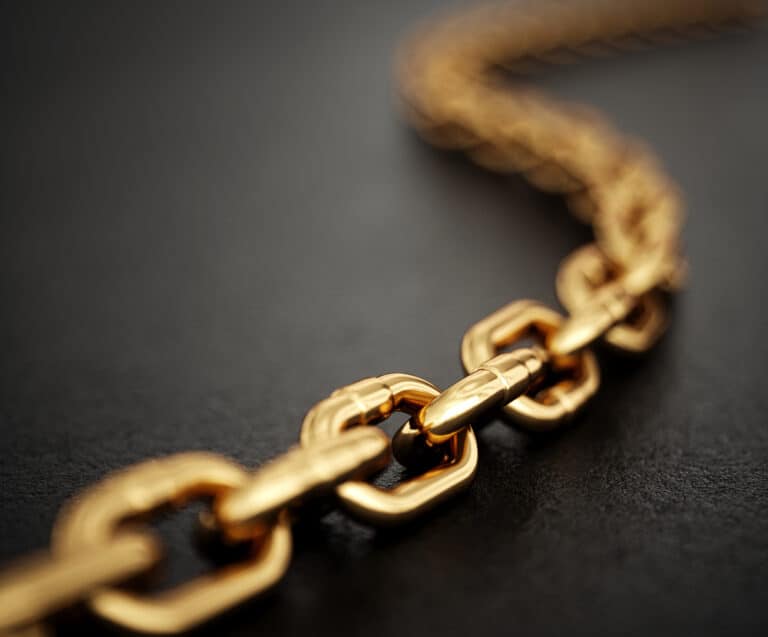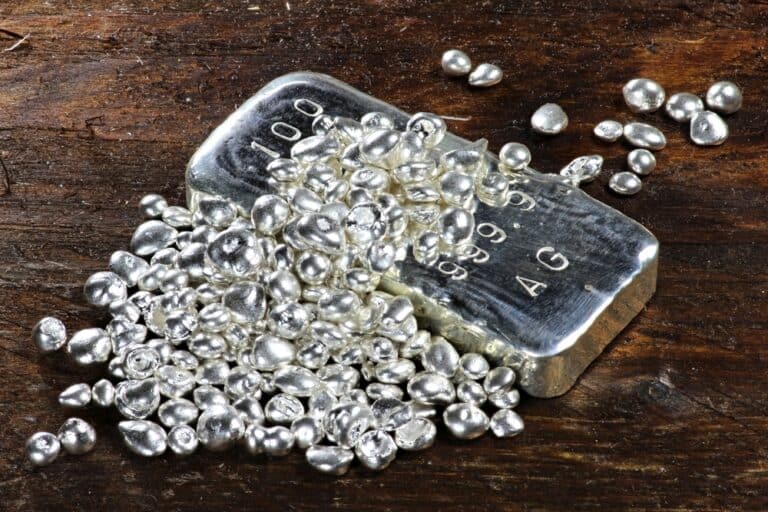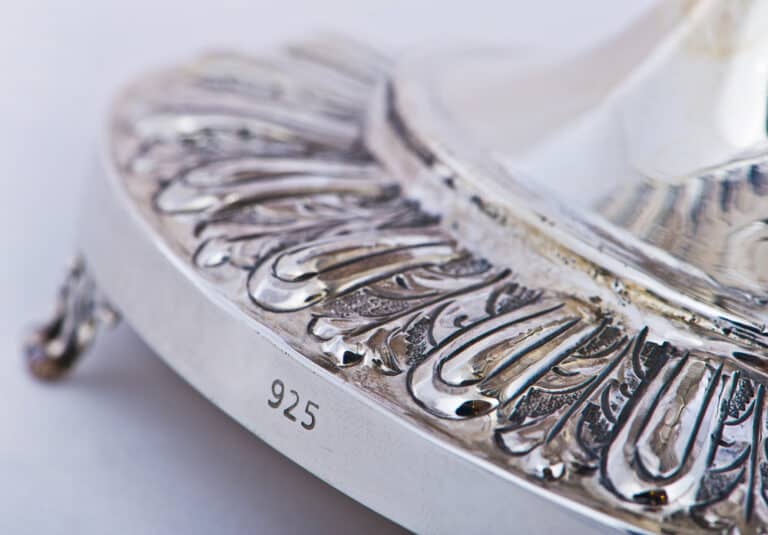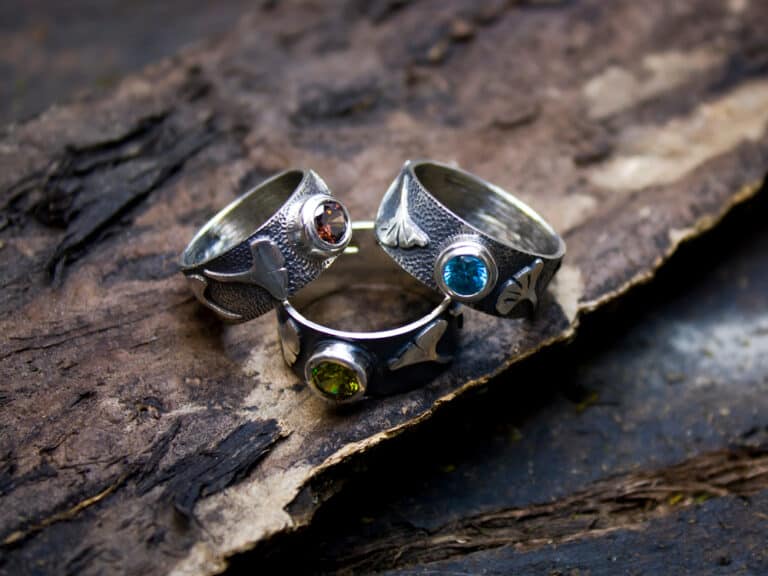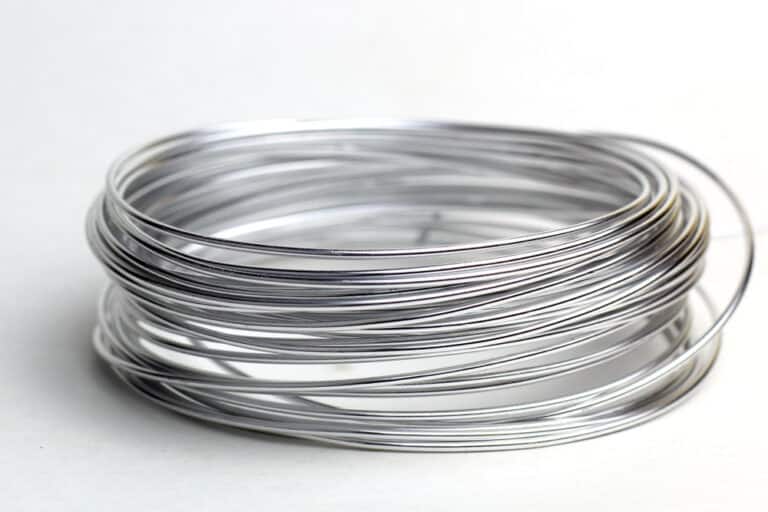The weight of any precious metals matters a lot. It can determine so much when it comes to jewelry or even use in electrical components. So, how heavy is silver compared with other precious metals?
The weight of silver can vary depending on how pure it is and what form it’s in. Silver is not one of the lightest metals out there. It has a density of around 10.49 grams per cubic centimeter, which may sound like a lot, but compared to gold, and other metals, it is relatively light.
For most people who are not jewelers, it is easy to overlook what is important regarding precious metals. While weight is important, it is easy to misunderstand. So, in this article, I will discuss everything there is to know about how heavy silver is. Let’s get into it.
Is Silver Heavier Than Steel
So you’re wondering if silver is heavier than steel? Well, to put it simply, steel is the heavier one. I mean, steel is denser than silver, meaning it weighs more for the same size. Steel is around 7.85 grams per cubic centimeter, whereas silver is 10.49 grams per cubic centimeter.
However, it’s worth noting that not all steels are created equal, and some might have different densities, so it’s not a straightforward comparison. But in general, steel is the one that will weigh more than silver.
The thing is, steel is not typically used in jewelry, well, except for necklaces, which you can find in abundance, but when it comes to rings and pendants, steel can dent easily. So, comparing silver with steel is OK in some situations, but when buying jewelry, unless it’s a chain shouldn’t really consider steel.
Is Silver Heavier Than Gold
Regarding weight, gold, and silver have a bit of a toss-up. Both metals have a relatively high density, with gold having a density of around 19.3 grams per cubic centimeter, while silver is slightly less dense at 10.49 grams per cubic centimeter.
This means that a piece of gold and a piece of silver that are the same size will weigh more than silver. But it’s worth noting that the weight of gold and silver can vary depending on their purity and form.
For example, a pure gold coin weighs more than a silver coin of the same size, but a gold ring with a thinner band weighs less than a silver ring with the same dimensions. So, in general, gold is heavier than silver, but it’s not always the case.
How To Tell If Something Is Made Of Solid Silver Or If It Is Plated Silver
When it comes to silver, pure is typically better than plated. Pure silver has more value and lasts longer without tarnishing. On the other hand, plated silver is a cheaper option that can wear away with time.
Here are a few tests you can do to check if silver is plated or pure:
- Hallmarks: Look for a small stamp on the bottom or back of the item. If it’s solid silver, it should have a hallmark indicating its purity and who made it.
- Magnet test: Silver isn’t magnetic, so if a magnet sticks to the item, it’s probably not solid silver.
- Weight test: Because silver is pretty heavy, it’s probably plated if an item feels light for its size.
- Acidity test: Using a small amount of acid like Nitric acid or silver acid test solution on a small inconspicuous area of the item; if it’s solid silver, the acid will not react; if it’s plated, the acid will react with the metal underneath.
- Professional Appraisal: If you’re still unsure, take the item to a professional appraiser
Remember that these methods aren’t foolproof, and the only way to know for sure if an item is solid silver is to have it checked by a jeweler and a reputable one.
What Is The Density of Silver And How It Compares
Not all precious metals are the same. Sometimes you need to compare two with each other. So, here’s how some other metals stack up:
- Gold is denser than silver
- Copper is less dense than silver
- Aluminum is even less dense than silver
- Iron is denser than silver
- Lead is denser than silver
- Platinum is the densest of all
So, silver is kind of in the middle when it comes to density compared to other metals. It’s not as heavy as gold or lead but heavier than aluminum and copper.
What Is The Weight Of Silver Per Ounce And How It Affects Its Value
Silver is a precious metal that weighs around 31 grams per ounce. However, its value is subject to fluctuations due to several factors. The demand for silver plays a crucial role in determining its price. If the demand for silver is high, the price goes up, but if it’s low, the price drops. This is similar to the price surge of popular toys during the holiday season due to high demand.
Economic factors also affect the price of silver. A flourishing economy leads to higher demand for silver, increasing its price. Conversely, during economic downturns, the demand for silver decreases, leading to lower prices.
Moreover, political instability can significantly impact silver’s price. During times of political unrest or war, silver is often considered a safe haven asset, driving up its price.
Finally, silver’s price is closely related to that of gold. Typically, when the price of gold rises, the price of silver also increases, and vice versa.
The Weight Of Silver Coins And How It Compares To Other Forms Of Currency
The weight of silver coins is not a one-size-fits-all deal, and it can fluctuate depending on the specific coin in question.
The popular U.S. Silver Eagle, for example, weighs about 31 grams, which is the same as other coins like the Canadian Silver Maple Leaf or Chinese Silver Panda. But there are other silver coins out there with varying weights, such as 5 grams, 10 grams, 20 grams, and beyond.
It’s not common to use silver coins as currency in everyday transactions, unlike paper bills or regular coins we use to purchase things. Instead, people buy silver coins for investment purposes or as a safeguard against economic uncertainty and inflation.
Speaking of weight, silver coins are significantly heavier than paper money or regular coins. Take the U.S. silver dollar, which weighs about 27 grams. That’s a massive difference compared to the measly few grams a paper dollar weighs.
This difference in weight between silver coins and paper money can be quite surprising, especially for those new to silver coins.

The Truth About The Weight Of Silver
Do you want to know if silver is heavy or not? Honestly, it’s not super heavy. It’s not as heavy as other metals like copper or gold.
It’s got a density of around 10.5 grams per cubic centimeter, so it’s not the heaviest thing out there. Silver is pretty soft and can be easily bent or scratched.
Investing In Silver: XX Tips
Investing in silver is about researching the market, deciding on investment goals and budget, and considering storage options. Invest in physical silver or silver exchange-traded funds (ETFs) through a broker.
That said, let’s breakdown my xx tips for investing in silver:
- Consider the current market conditions and your personal investment goals before buying silver
- Diversify your investment portfolio by including a mix of stocks, bonds, and precious metals
- Do your own research and invest in reputable dealers
- Be aware of the risks involved and invest only what you can afford to lose
- Consider physical silver (coins, bars) or ETFs as a way to invest in silver, depending on your preference
- Keep in mind that silver is not like other investments, and it’s not considered a mainstream investment, so make sure you have a good understanding of the market before investing in silver
Pros And Cons Of Investing In Silver
Because you are reading this article, it is safe to assume you are doing your research. Perhaps you are looking to invest in silver, and now that you know pretty much everything there is to know about the weight of silver, the next best thing is to understand the pros and cons of investing in the precious metal:
Pros of investing in silver:
- Silver has a long history of being valuable and in demand, making it a solid investment
- It’s more affordable than gold, making it accessible to a wider range of investors
- Silver can be a great hedge against inflation and economic uncertainty
- Silver has many industrial uses, so, it can benefit from growth in those sectors
Cons of investing in silver:
- The price of silver can be more volatile than other investments
- Silver mining and production can be environmentally damaging
- The market for silver can be influenced by speculation and manipulation
- And remember, investing should be fun too!
Conclusion
The weight of silver is a defining characteristic that makes it stand out among other precious metals. It’s dense, durable, and has a satisfying heft when held in your hand. This unique weight lends it an air of stability and reliability that makes it a valuable asset for investors.

